Canadian American Great Lakes
By Ted Scull.
Updated Oct 2024
The Great Lakes form a vast inland freshwater basin that covers an area almost as large as the state of Wyoming.
All five — Erie, Huron, Michigan, Ontario and Superior — are interconnected by rivers, straits and canals. Along with the St. Lawrence River, they provide a continuous 2,200-mile deep water navigation artery from the Atlantic Ocean to the shores of Minnesota and the western end of the Province of Ontario.
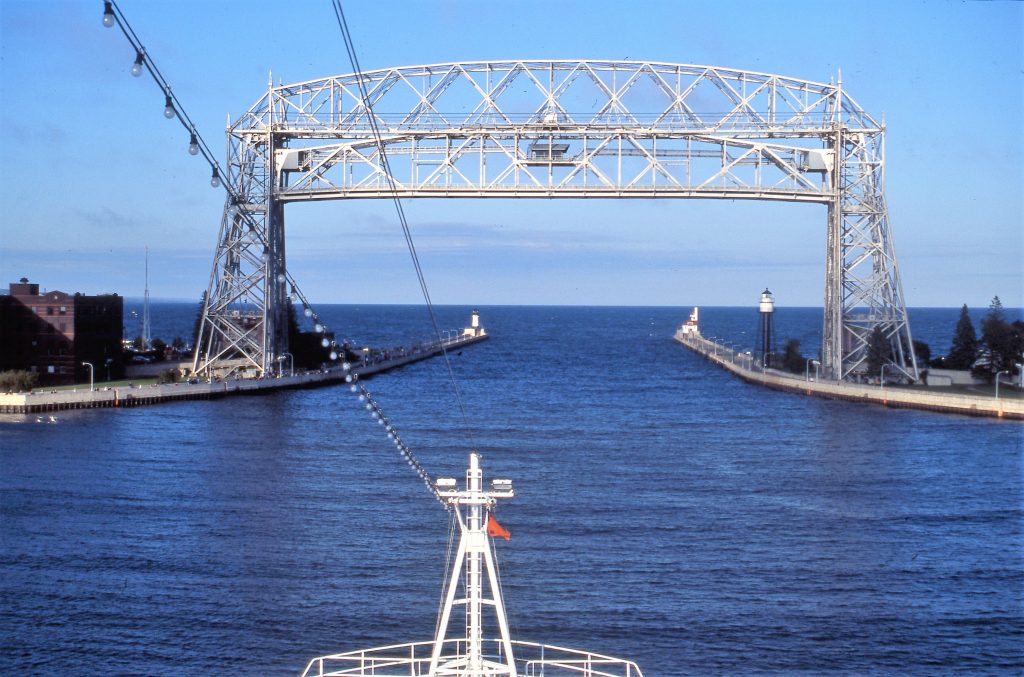
Heading into the Great Lakes. * Photo: Ted Scull
At the dawn of steam navigation, a century and a half ago, the Great Lakes became major trade routes for transporting grain, produce, iron ore, coal and lumber from the interior of North America to burgeoning manufacturing cities along the lakefronts and via the St. Lawrence to the rest of the world.
Large paddle steamers plied overnight between Buffalo, Cleveland and Detroit, and seasonally, from Chicago and Milwaukee, as urban, suburban, and country folks flocked to summer retreats in northern Michigan and Canada’s Georgian Bay islands, a tradition lasting for a span of one hundred years.
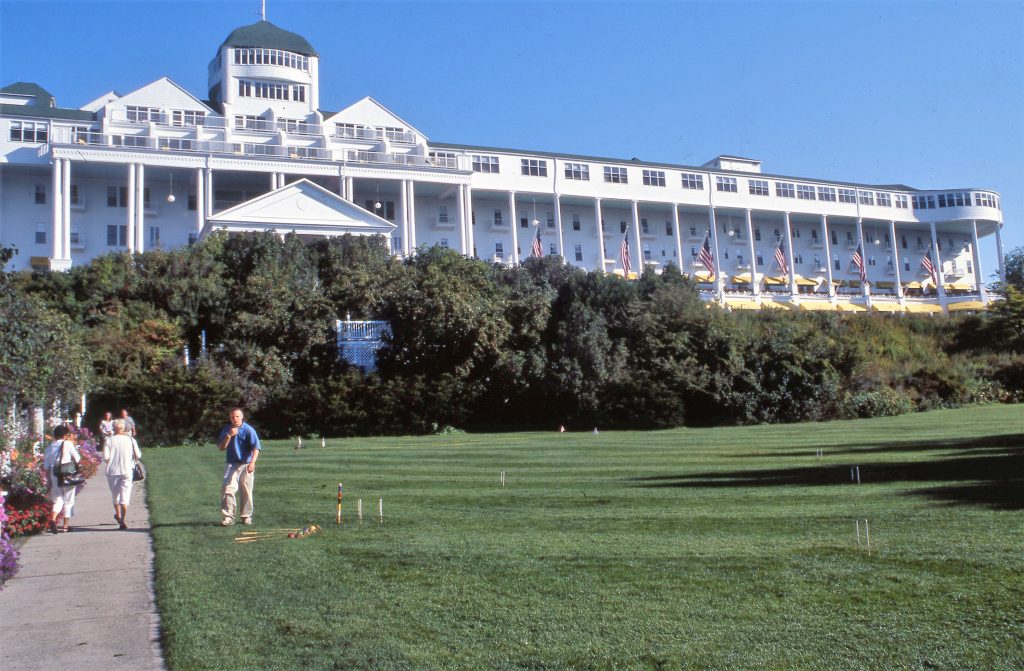
Grand Hotel, Mackinac Island, Michigan. * Photo: Ted Scull
When the pleasure steamers, many built just before or after World War I, wore out, they weren’t replaced. By the mid-1960s, most vacationers had taken to their cars, and Great Lakes cruising had largely disappeared.
Subscribe to our monthly small ship cruise email
Subscribe to QuirkyCruise.com for monthly curated newsletters highlighting our top small cruise ship reviews, round-ups & offers!
Great Lakes Renaissance
Then in the 1980s, a few small vessels began venturing into these waters again; those belonging to American Canadian Caribbean Line, Clipper Cruise Line, plus others under charter. Size was limited to the lock dimensions of the St. Lawrence Seaway, Welland Canal between Lake Ontario and Lake Erie, and Soo Locks between Lake Huron and Lake Superior.
When my parents told me that I was very likely conceived on a lake steamer sailing overnight from Chicago to Harbor Springs in northern Michigan, that gave me an impetus to see what the Great Lakes were all about.
I booked a 10-day, five-lake cruise on a chartered ship boarding in Toronto, my favorite Canadian city.
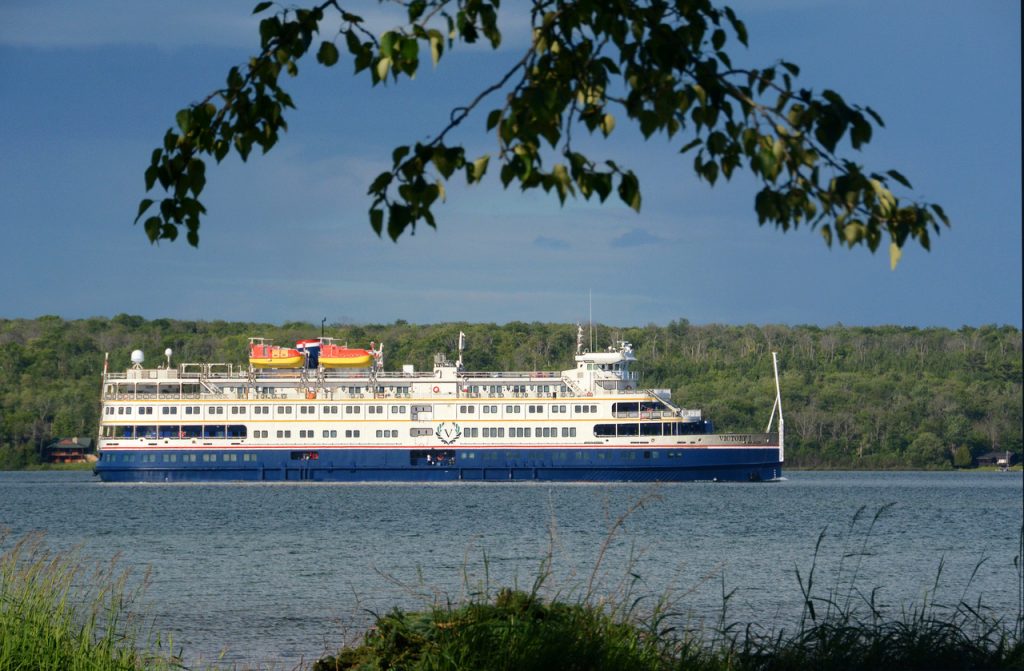
The Victory I in Sault Ste Marie along the US-Canadian Border. * Photo: Victory Cruise Lines
Niagara Falls was not on my itinerary, but I had been there several times and much enjoyed the setting, spray and a boat ride, all bundled up, on the Maid of the Mist, sailing right up to the powerful cascading waters. During a stop at lovely Niagara-on-the-Lake, it was hard to believe that the entire town had been burnt to the ground by the Americans during the War of 1812.
Rebuilt, the main street displays everything that is attractive about 19th-century architecture executed in wood and it made a fine lunch stop before heading out to a Niagara Peninsula vineyard, Canada’s premier wine-growing region.
The grapes produce more than just palatable chardonnays, pinot noirs and syrahs.
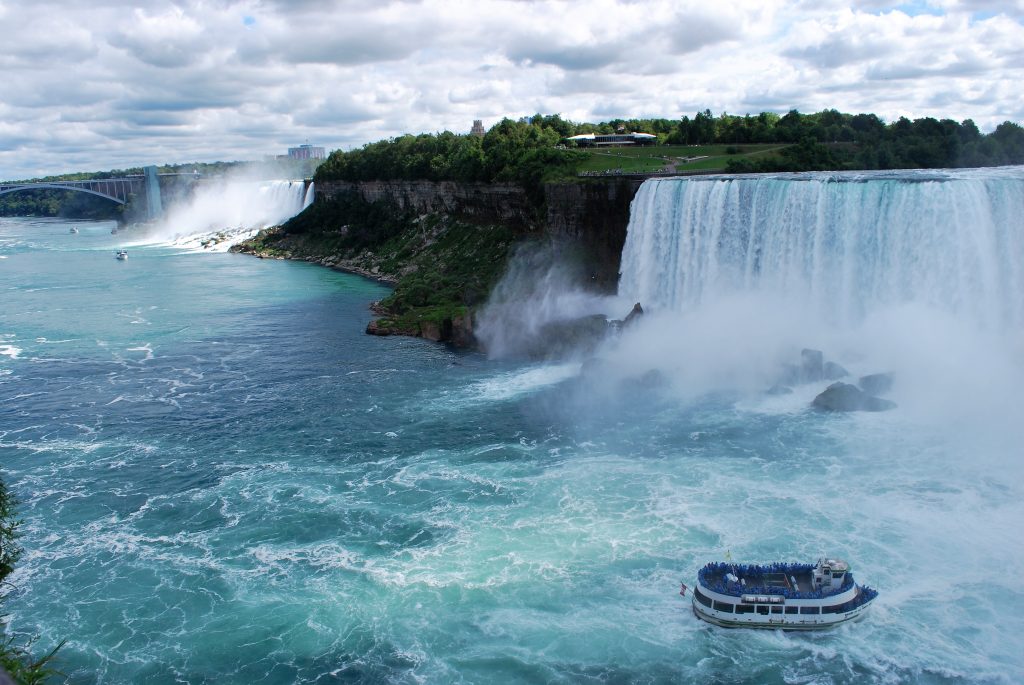
Niagara Falls and the Maid of the Mist. * Photo: Ted Scull
RELATED: Read writer Karl Zimmermann’s review of his recent Ocean Voyager cruise on the Great Lakes.
Welland Canal
The ship then lined up for an all-day transit of the Welland Canal boasting an impressive upward lift from Lake Ontario to Lake Erie nearly four times that of the Panama Canal. As we awaited our turn, giant ore and grain carriers high above filled the multiple chambers.
We climbed through eight locks and passed under several lift bridges while exchanging greetings with visitors watching from observation platforms ashore. Beyond the canal towns, Niagara Peninsula farms and vineyards abutted the busy waterway.
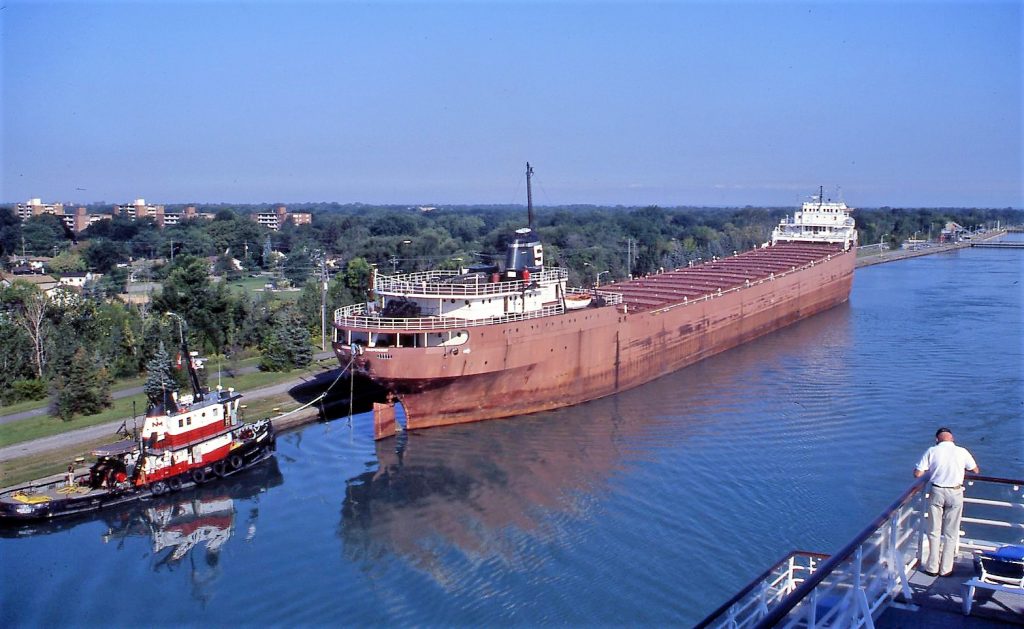
A lake ship in the Welland Canal. * Photo: Ted Scull
Lake Erie
Exiting into Lake Erie in the late afternoon, we sailed overnight to arrive at the mouth of the Detroit River at sunrise and tie up at Windsor on the Canadian side. An all-day excursion used the Ambassador Bridge to reach the Henry Ford Museum and Greenfield Village located just west of Detroit.
This museum naturally showcased scores of antique automobiles, including the presidential limousine in which John F. Kennedy was shot, auto advertising posters, videos of early car and mobile home travel, railway locomotives, aircraft, farm equipment and kitchen appliances.
Outside, Greenfield Village recreates an American town bordering on a village green with varied examples of residential houses spanning three centuries, an operating steam railway and locomotive turntable, classic touring cars and buggies to ride, and a paddleboat on which to cruise the small lake.
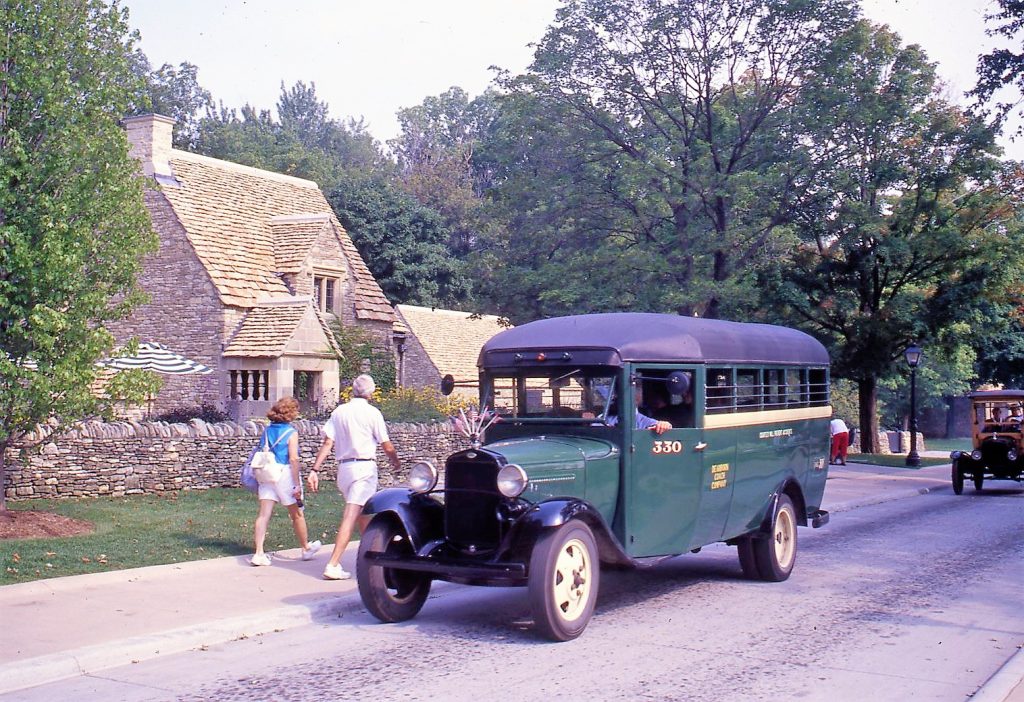
Greenfield Village, Ford Museum, Detroit. * Photo: Ted Scull
Lake Huron
Back on board later in the day, we passed residential communities lining the St. Clair River and sailed out into Lake Huron. Turning into Georgian Bay, the ship threaded amongst dozens of wooded islands to anchor off Midland, a small Ontario town, to witness a demonstration of Native Canadian culture and traditions in an enclosed Huron Ouendat Village. Other towns such as Little Current on Manitoulin Island showcase Ojibwe culture.
After an overnight sail northwestward through Lake Huron, we tied up on the Canadian side of Sault Sainte Marie.
Separate sets of Canadian and American Locks tame the St. Mary’s River rapids that flow from Lake Superior into Lake Huron. Amazingly, 90 percent of the world’s iron ore passes by here en route from the mines surrounding Lake Superior to smelters along the other lakes and the St. Lawrence then out to sea bound for international buyers.
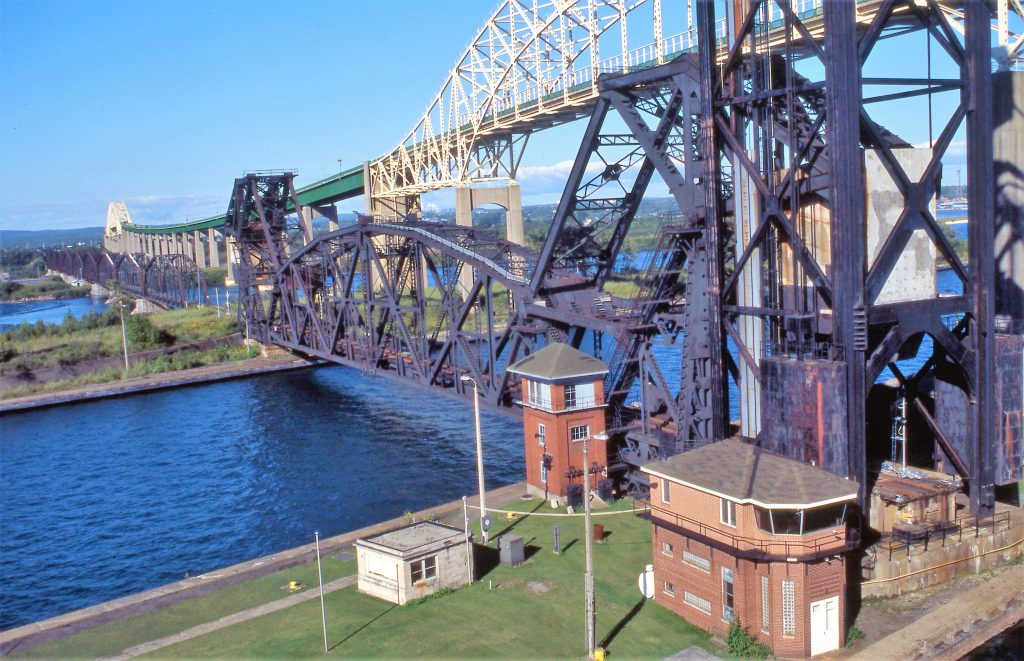
Soo Locks at Sault Ste. Marie – US & Canada. * Photo: Ted Scull
The call here offers a day trip on the scenic Algoma Central Railway to a picnic site and hiking trails in beautiful Agawa Canyon. Closer to town, the Canada Bushplane Heritage Centre’s collection includes two dozen bush planes, flight simulator, techniques for battling forest fires, and a fire tower to climb.
Nearby the museum ship Valley Camp shows off the unusual design of these grain and ore carriers with split superstructures positioned well forward and well aft.
On board, tour the pilot house, crew quarters, and cargo holds now displaying artifacts, ship models, paintings and ship wreck items including lifeboats from the Edmund Fitzgerald that disappeared in a great storm in 1975 with the loss of all 29 crew members. In 1976, Gordon Lightfoot made a hit song called “The Wreck of the Edmund Fitzgerald.”
Soo Locks
Passing through the Soo Locks into Lake Superior, we cruised westward passing the well-named “sleeping giant,” an island shaped to resemble a reclining Native American Indian, to dock at Thunder Bay.
The huge grain port transfers Canada’s prairie province wheat from rail to laker. Ashore we visited Old Fort William, a former British fur trading post and fortification, and unusual rock formations deep in Ouimet Canyon.
Lake Superior
Then at the southwestern corner of Lake Superior, Duluth, a major lake port, offered the Depot Museum with a major collection housed in a chateau-style, late-19th-century stone station that includes a railway post office, one of the world’s largest steam locomotives, that curiosity the caboose, and colorful china and tableware sets from the once mighty U.S. railroads.
A dramatic video showed a huge snow plow operating at speed to clear the tracks then derailing in a spectacular pileup.
The city’s landscaped waterfront stretched along a three-mile promenade that accesses a beautiful rose garden and maritime displays including tugboats and traditional steam-powered laker.
Leaving Duluth, we enjoyed a sunny day on the lake before passing along the St. Mary’s River and through the Soo Locks to enter Lakes Huron and Michigan.
Mackinac Island
Going ashore at Mackinac Island, everyone’s favorite call, we walked the narrow streets of a white wooden 19th-century town where automobiles have been banned since before 1900.
The village nestles beneath the mighty turreted Grand Hotel, the world’s largest summer resort, featuring a colonnaded front porch hundreds of feet in length, a handsome, light-filled restaurant seating over 1,000 guests, intimate parlors scattered on several floors and traditional wood-paneled accommodations, including five suites decorated to the style of five living presidential first ladies.
Cascading flower gardens rimmed terraced lawns set up for bocce ball and croquet. It’s a place I am dying to return to for an overnight visit. And that just may happen this summer.
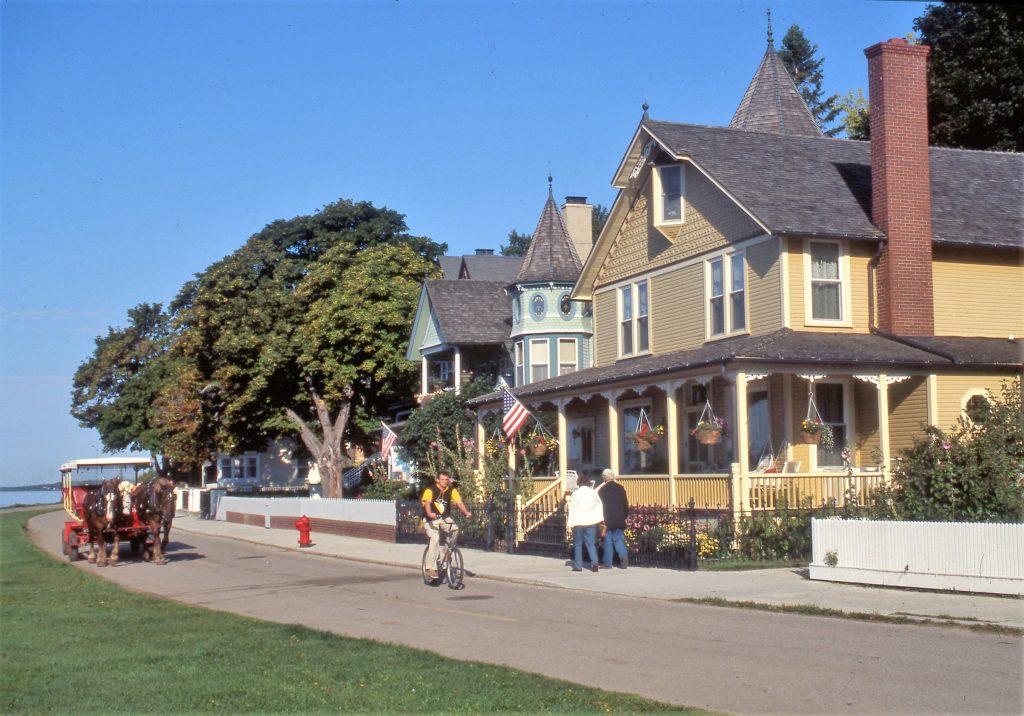
Car-less Mackinac Island, Michigan. * Photo: Ted Scull
On the final afternoon, the ship slid under the soaring Mackinac Bridge linking lower Michigan with its Upper Peninsula, then cruised south overnight to Chicago. We awoke to the rising sun reflecting off a majestic skyline that almost matches that of Manhattan with classic early 20th-century skyscrapers set against a backdrop of soaring the newest supertalls.
The ship tied up at the Navy Pier, a lively festival marketplace, amusement park, stained glass museum and outdoor promenade stretching a half mile out into the lake.
Chicago, like New York, is a walkable city for Michigan Avenue and the Magnificent Mile, State Street, Millennium Park and the Art Institute of Chicago. Take the Chicago River architectural tour and ride the Green Line elevated train out to Oak Park for an inspection tour of architect’s Frank Lloyd Wright’s home and the neighborhood’s historic houses.
Cruise Lines That Ply the Great Lakes
- Victory Cruise Lines
- Pearl Sea Cruises
- Viking Cruises
![]()
Don’t miss a post about small-ship cruising, subscribe to QuirkyCruise.com for monthly updates & special offers!
© This article is protected by copyright, no part may be reproduced by any process without written permission from the author. All Rights Reserved. QuirkyCruise.com.

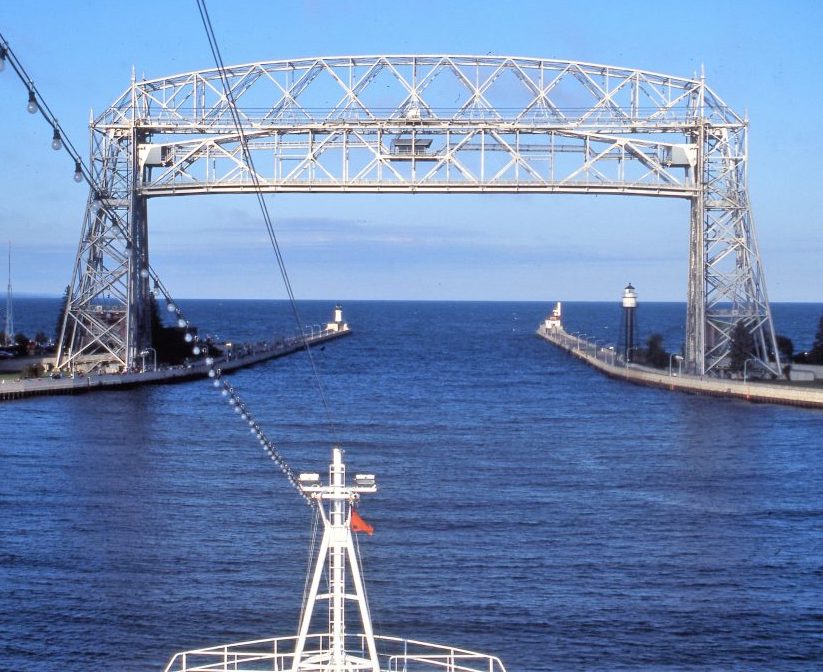
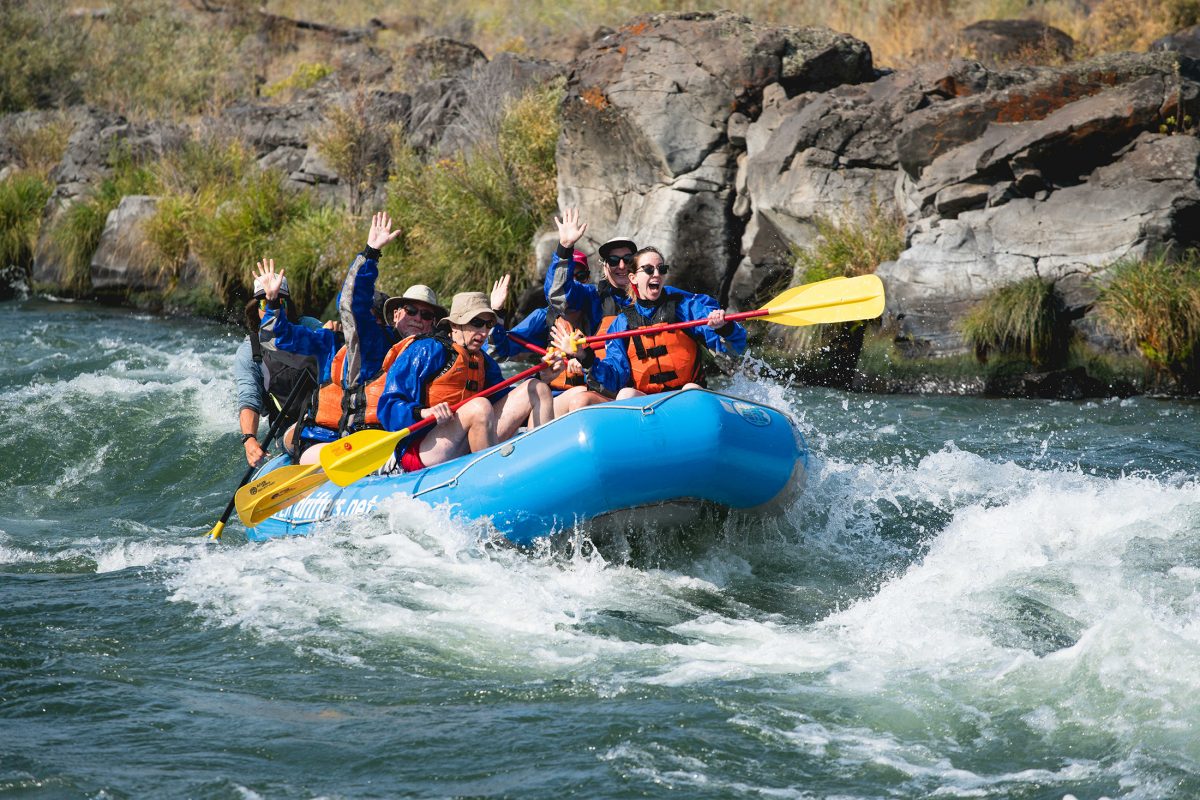
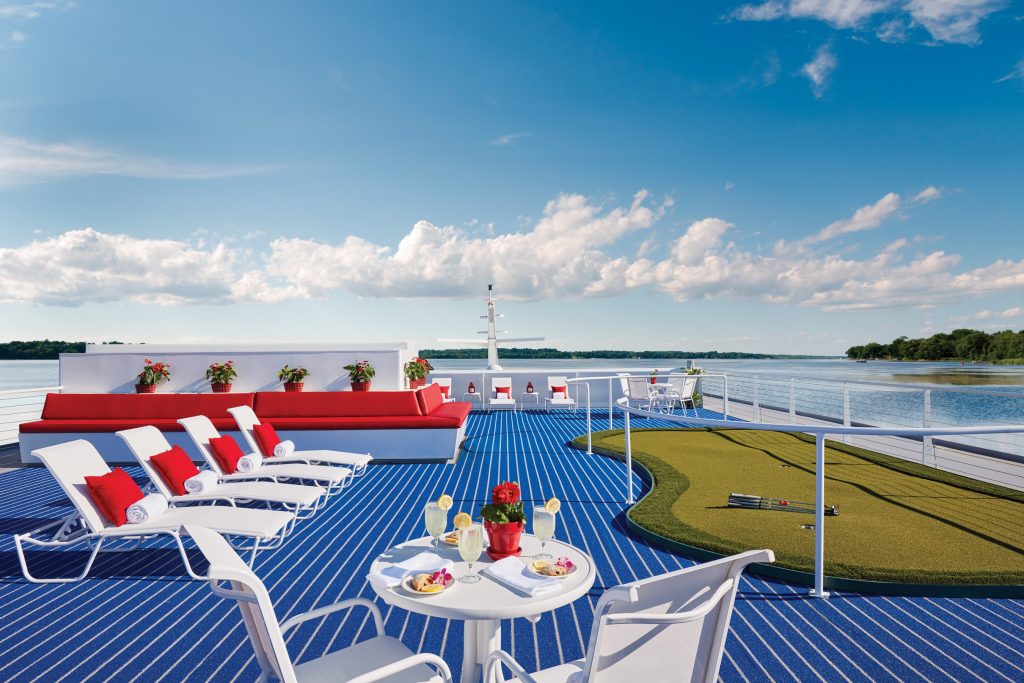
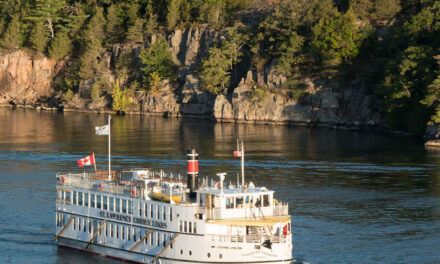
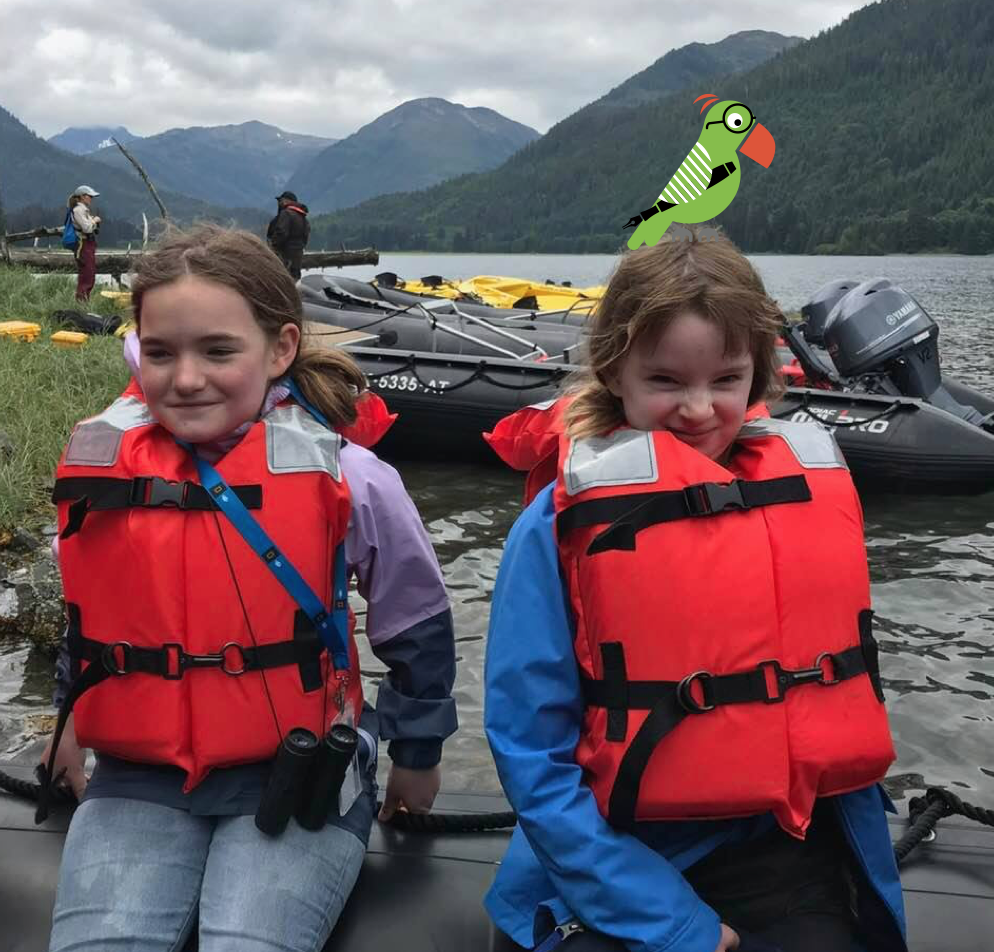








 HEIDI SARNA
HEIDI SARNA











